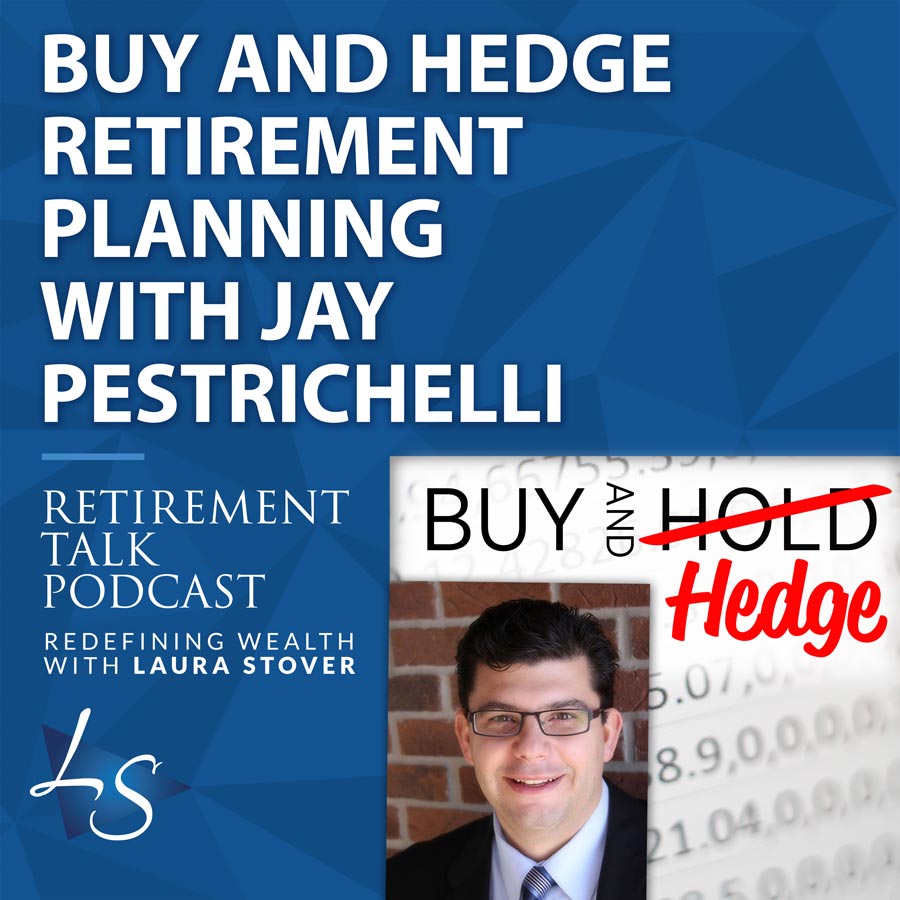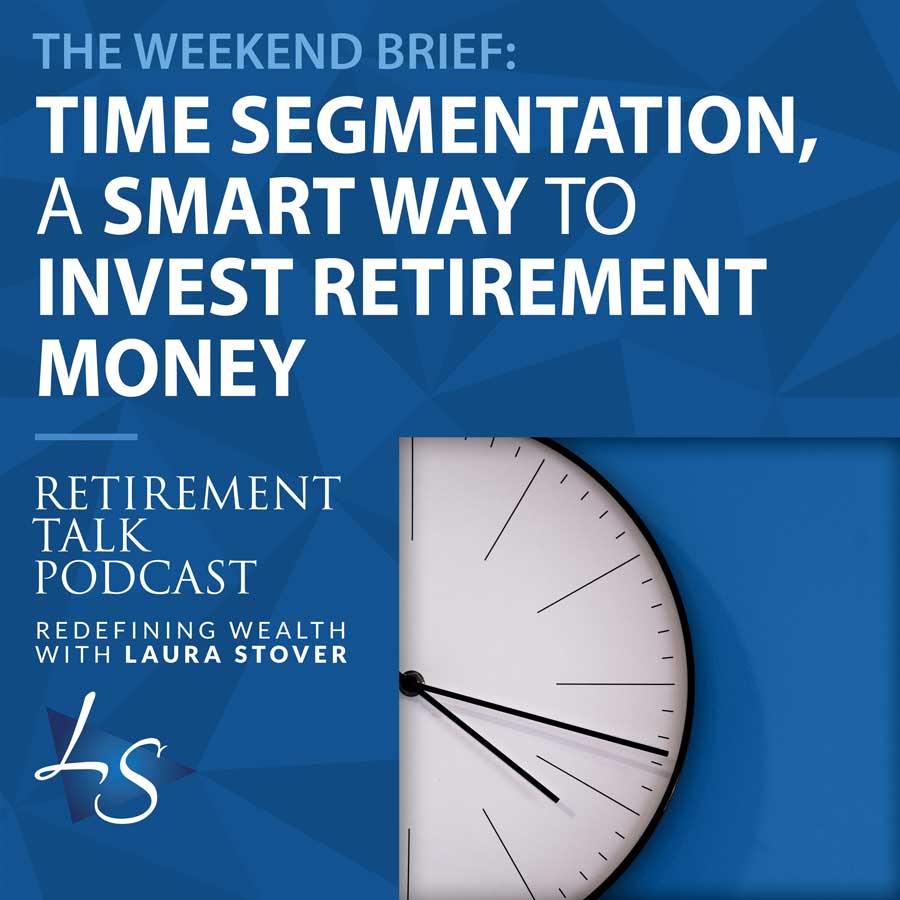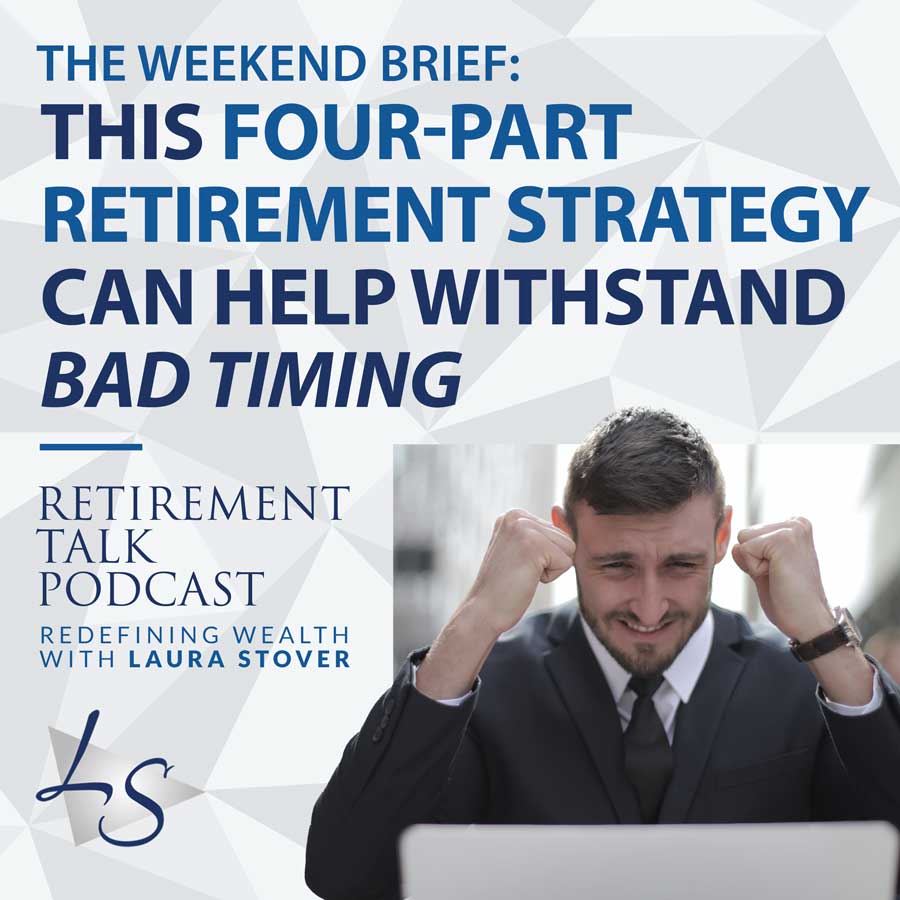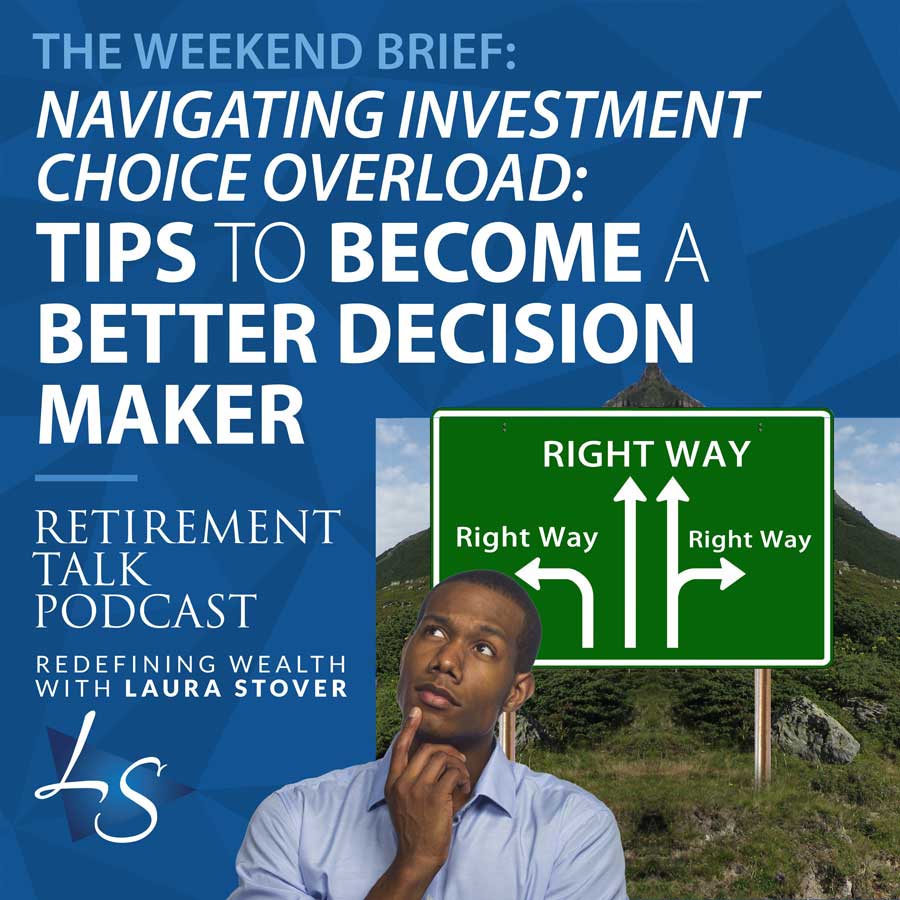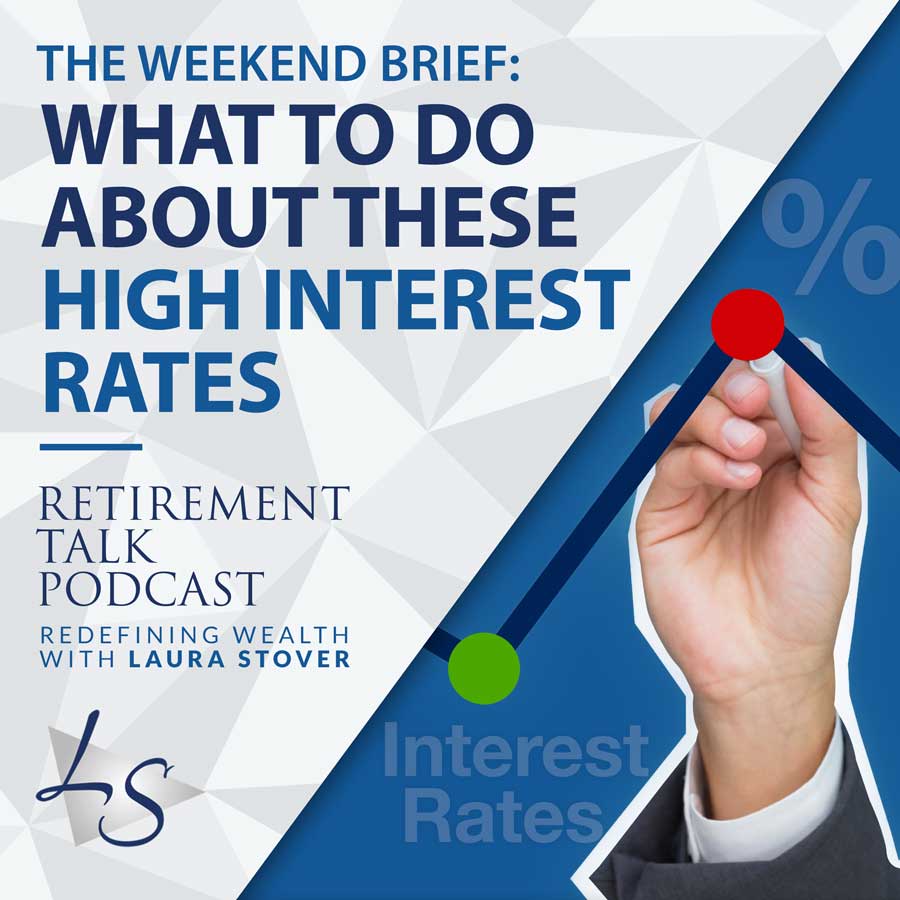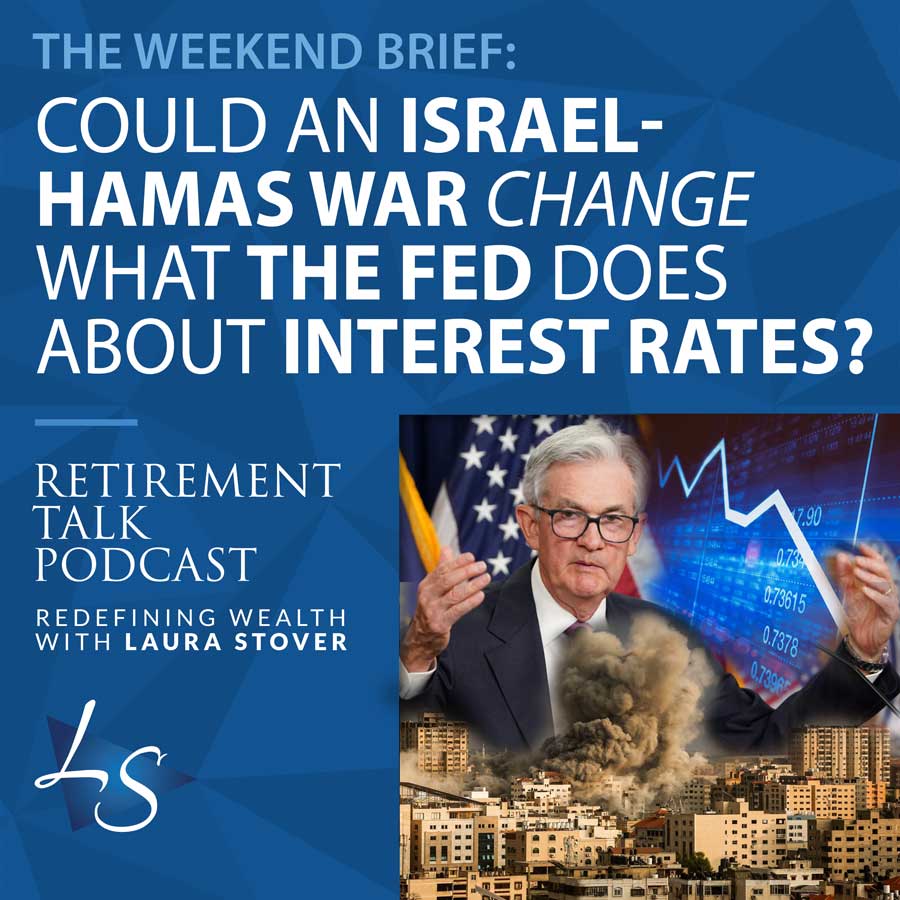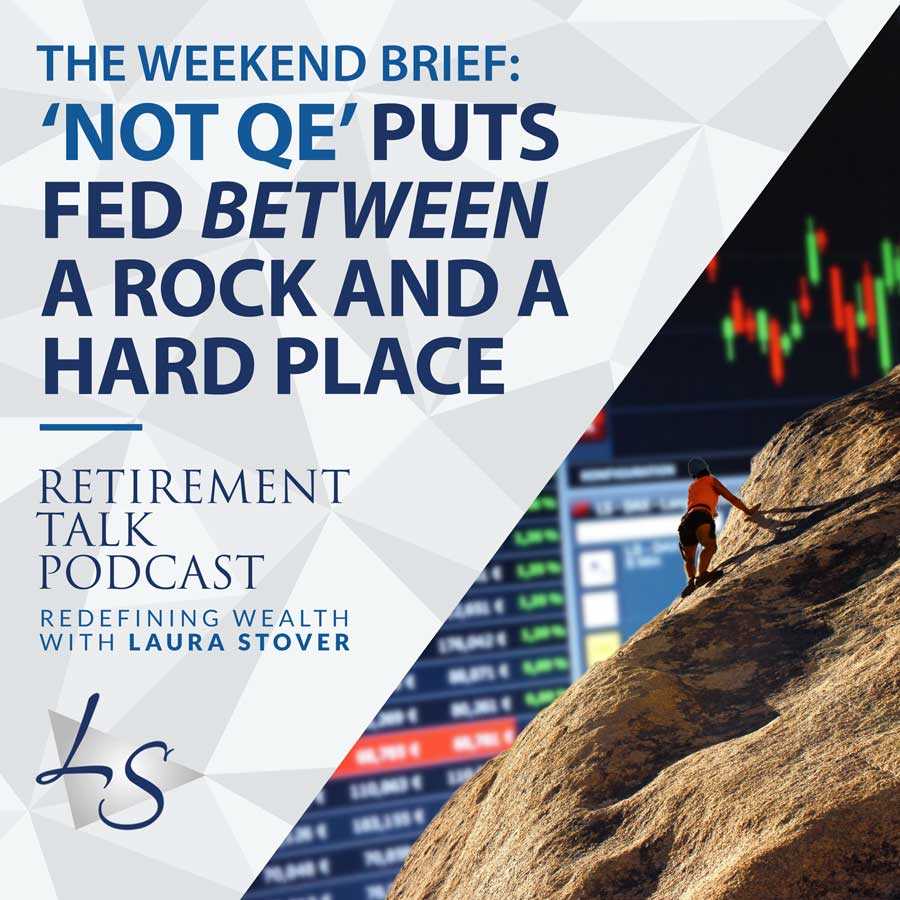If you’re trying to build wealth, sharp market downturns can be your biggest enemy. But these downturns are not uncommon and we want you to be prepared to overcome these market dips. On today’s episode, esteemed money manager, Jay Pestrichelli joins us to discuss buy and hedge retirement planning. He’s the author of Buy and Hedge as well as the owner and co-founder of ZEGA Financial.
Over the long term the market usually performs well, yet with all the volatility we’ve seen throughout the start of 2022 many of us are getting nervous. Even before this year, Jay notes the S&P has had violent volatility that has evolved over several years. Looking at these turns in the market it really comes in 3-to-5-year waves. The most current starting in February of 2020. What does this mean for investors? It means that volatility comes in cycles and is something that we need to prepare for.
ZEGA and the Redefining Wealth process utilize hedging in a lot of portfolios that can bring nice returns as opposed to a traditional 60-40 broad asset allocation. Hedging is managing stock market risk. It’s a long-term investment strategy that is very useful for people approaching and in retirement, people that don’t have the time to withstand this type of market volatility. Join us today as we explore the importance of hedging, developing a plan, and more with Jay Pestrichelli.
Receive Your Complementary Copy of Buy and Hedge by walking through the Redefining Wealth Process: https://redefiningwealth.info/schedule/
Rate & Review and Subscribe to the Podcast:
https://podcasts.apple.com/us/podcast/retirement-talk-podcast-with-laura-stover/id571347188
Links
Schedule a Review: https://redefiningwealth.info/schedule/
Timestamps (show notes):
3:01 – Jay’s background and expertise in the financial industry
5:38 – 3-to-5-year volatility waves in the market
9:53 – How does hedging work and what are the benefits?
15:47 – Obsessions on return, discussions on risk
19:09 – Being concerned with only with Alpha
24:00 – Most important rule of buy and hedge
26:51 – Will interest rate hikes impact the market?
30:19 – Will it reverse some of this inflation?
34:13 – What should we be watching for?
Listen & Subscribe
Review the Transcript:
Ron Stutts: Welcome to Retirement Talk, the Redefining Wealth Show, your source for financial information specifically for pre-retirees and retirees. We’re here each and every week to help you better navigate during these economic times. We’re here to discuss thoughts and ideas in the field of finance and retirement, as well as discuss trending topics that could impact your bottom line. We’ll break it all down. These discussions can help you make better, informed decisions, so you can make better financial choices and live the lifestyle you imagined from retirement. Laura Stover is a registered financial consultant and CEO of LS Wealth Management, as well as founder and owner of LS Tax, a consulting firm. She’s been featured in Forbes, CNBC, and the Wall Street Journal. I’m Ron Stutts. Our topic for today is Buy and Hedge retirement plan with esteem money manager, Jay Pestrichelli, author of Buy and Hedge, and owner, founder, and principal of ZEGA Financial. Now, here are your hosts, Laura Stover and guest host today, Jay Pestrichelli.
Laura Stover: Hello, hello, hello. And I’ll tell you, if you are trying build wealth, sharp market downturns can be your worst enemy and it happens frequently, far too often. This year did not start out or begin quite as stellar as previous years. I think we all got a little spoiled with a very robust bull market in 2021, but it’s not uncommon to have a frequent number of downturns. If we look at an 18 year period, the S&P has experienced 16 very violent declines. And how do you overcome that? That’s part of our discussion. On today’s Retirement Talk, I have a good friend, longtime colleague, one of the best options traders I know, and we’re going to really talk about a lot of tools that I think many people are not quite as familiar with maybe as they should be. Maybe they’re under utilizing them in the portfolio as a whole, but no one better than to co-host with me here today than Jay Pestrichelli. Hello, Jay. How are you?
Jay Pestrichell…: Hey, Laura. Great to be here. Thanks so much. Really, it’s an honor to be here. I know you’ve had a great success with the podcast. Thank you so much for having me.
Laura Stover: Well, I think you, because you bring a wealth of knowledge and many years of expertise, I know you started out when you were 12, but you’re not a rookie, you’re very, very accomplished, don’t be shy. So just to give our listeners a little bit of a backdrop, your owner of ZEGA Financial, based out of the beautiful West Palm Beach, Florida’s your main office. I know you have some offices in Omaha. Omaha’s not quite as exciting as West Palm Beach, but you’ve been and stationed there. You’ve appeared on CNBC, Fox business, the NASDAQ, the Street, Fast Money, CNN, just to mention a few notable media outlets. And just a little bit of your background, JB, for being a money manager, running your own company and your own registered investment advisory firm, you were actually a longtime executive at TD Ameritrade, going back a little bit in your resume.
And for those listening, TD Ameritrade is one of the largest line brokerage firms that in total investor transactions are executed. You spend a lot of time there, building and trading on that investment platform and really creating a lot of things that people may be utilizing today if that’s their custodian. Tell us just a little bit about what you did at TD, then we’ll hop into our discussion.
Jay Pestrichell…: Well, you kind of nailed there, Laura, right? I ran the active trader business, which meant anything that had to do with trading went through my department. And you’re right, probably a lot of folks use that platform today, that was developed gosh, way back when. I was there, as you said, actually for close to a decade, so really good times. And that’s why I lived in Omaha. It’s why we actually still have an office in Omaha. We have associates that work out of Omaha for ZEGA financial today.
Laura Stover: Well, fabulous. And again, thank you. Thank you. Now, Jay is also the author of one of my favorite books. You co-authored it with Wayne Ferbert and this book, we were just talking how relevant it is with everything we’re seeing today. It’s called Buy and Hedge, and I will tell you how you can receive a copy a little bit later here in the show, but it’s really a fabulous title, Buy and Hedge. And we want to really elaborate what that means and why it’s relevant to the market. And you mentioned it in the book and obviously people are reminded this year, the market can really be fantastic. And over the long term, it always is historically, I’ll say, but we’ve seen so much volatility for a variety of reasons.
But even before this year, you referenced in the book, an 18 year stretch that the volatility in the S&P, if it had some very violent periods of volatility. And that’s really something that’s kind of evolved over the last several years. Would you tend to agree with just the scope of… I mean, 1987, a 500 drop point in one day was a big to do. Of course the market cap was much smaller then, but where’s all this volatility as a whole? It just seems like these swings are so broad, whether it goes up or down.
Jay Pestrichell…: Yeah. Volatility as a way of measuring the market is kind of a more recent phenomenon, maybe the last 20 years and options have a lot to do with that. The way to kind of measure volatility, I guess there’s two ways, right? We, as investors understand what happens when my portfolio goes up and down, and that change is one way that you measure volatility, how volatile are my returns, right? I’m my making 5% a year and losing 5% or making 20, losing 20? Right? Those are ways we measure volatility. But another way of measuring volatility is what is implied in the market, meaning what’s the market projecting that the volatility will be. And if you look at that as a way of measuring volatility, it kind of comes in three to five year waves. So what do I mean by that?
So we started believing that the current bout of volatility that we’re in started in February 2020, when COVID hit. Of course, that was an obviously, a volatile time, an extremely volatile time. And we haven’t really peeled that off yet. Volatility is still here. But before that, the five years before that, volatility was muted, the market didn’t think it was going to be too violent. There was really only one correction to note during that period before 20, 25 years, before 2020. And so it was a more smoother year, but then you go back to the lost decade of 2007, 2008, 2009, like in that kind of period, then you had more volatility. So volatility comes and goes, Laura. I think we’re just starting out the third year of a potential five year higher volatility environment. So what does that mean for investors? Right?
That’s something that we need to prepare for. It’s something that we need to realize it’s coming. It doesn’t mean run for the hills and hide and put the money in the mattress because you can clearly make money in volatile years. You mentioned last year, was a wonderful year for returns. The S&P was up 28%, but it was a very volatile year. Volatility was high, but the market still delivered high returns. And so volatility scared you away. You missed out on that. So we don’t think volatility means high. We just mean prepare for it, get ready. And the way that this year is starting, it’s consistent with what that would look like.
Laura Stover: Interesting. So you’re crystal ball and metrics that you use to analyze things. This is part of the intellectual property, every money manager has tools. And obviously it’s like a heart cardiogram. We can tell if everything’s flowing right or if I have blockage for simplistic parallels so our listeners kind of understand, but volatility is here to stay. That’s interesting, three to five years. So then it becomes all the more important, I mean, obviously volatility can be a great thing if you are young. I wish I was in my twenties again. And I remember hearing people say, “Oh, I wish I knew what I know now back at an earlier age.” And I truly do, because if the market goes down, I’m just going to put more money in dollar cost average over a longer course of time.
Retirees, if we’re 10 years in front of retiring or we’re stepping into retirement, you need to have a grip on it because it can turn into a very bad thing if you do not employ the right philosophy, in my opinion, with how you manage your assets. So hedging, this is what you are known for. And the word hedging is something that is used today that ZEGA utilizes. We utilize this in a lot of my client portfolios that we’re managing, and you have a variety, whether it be alternative strategies, which can really bring some yield. I know 2015 for example, was a really flat year.
Equities did not do well in 2015 and a non-correlated strategy like this can, at certain market conditions bring some really nice returns to play because it works completely different than your typical 60-40 broad asset allocation that most people kind of adhere to. And they taper that equity position down a little more to become a little more conservative as they get closer to retirement. And that’s really as outdated as an 8-track tape anymore. I’ve heard you speak on this on some interviews. So let’s talk about, and you mentioned this in the book, great book, Buy and Hedge, and how does hedging work? What is hedging?
Jay Pestrichell…: Good question. And when we talk about hedges, we’re not talking about those green bushes in front of your house or around your yard. We’re talking of about protection, the term hedging your bets is something that folks are familiar with. Now, this is not a hedge fund. It’s nothing like that. This is a long-term investment strategy, which is appropriate for, as you mentioned, people that are approaching or in retirement, that don’t have the time withstand the potential volatility. I loved your comment where you said, “I wished I was younger. I would always invest more when the market was down.” I couldn’t agree with you more on that, but not everybody’s younger. The problem with being younger is you probably don’t have that much money to invest in the first place, right? Your priorities are different. But as you’re approaching or in retirement, hedging and protection is really important.
So when we talk about hedging, we talk about managing stock market risk. We don’t think there’s any better way to manage risk than with options. You mentioned a second ago, Laura, that folks historically have used bonds as an offset to stocks, right? The general thinking goes, hey, stocks go up, bonds go down, stocks go down, bonds go up. But that’s not the case anymore. Certainly not in this environment, as we have interest rates rising. I’m sure everybody’s familiar with how low interest rates are today. They are going to be on the rise over the next few years. And when that happens, bonds don’t go up. Bonds will lose value in those scenarios, right? The bonds have an inverse relationship to their yield. So as rates go up, bonds go down.
So you can’t use that older approach for all of your portfolio. Instead, head we hedge so that you can still invest and you can have protection. When I think about hedging, Laura, a lot of people would say, “Well, that sounds pretty complicated to me,” but what a lot of folks don’t realize is as Americans, we’re hedgers every day. We’re forced to hedge. We buy life insurance, we buy health insurance, we buy car, insurance, we have homeowners insurance, we have to buy insurance. Now, while what we do is not an insurance product, but the same concept applies. You have an asset you’re going to protect, like your car. In this case, it’s our portfolio. You have a policy or position on that limits the amount of risk you can take. So if you total your car, your insurance company is going to give you some money back for it, but there’s a premium that you pay, right?
You pay a little premium every year to your car insurance at the beginning, depending, I guess, on how good or bad of a driver you are, right? A 16 year old driver’s going to pay a higher car insurance rate than a 55 year old driver that doesn’t have any accidents or tickets. Well, that’s exactly the way it works with the market. When the market is acting like a 16 year old driver and being volatile and unpredictable, cost of insurance is a little higher. And when the market is smoother, predictable, and it feels like there’s less risk, the cost of hedging is cheaper. And those are all the dynamics that go into creating a portfolio that’s protected and allows you to continue to grow with the market. Most folks need growth. So I’ll pause there for a second, Laura, if you want to push back on my insurance analogy a little bit, but that’s for me, the easiest way to explain it.
Laura Stover: That’s a good explanation that most people can be aware of. And that’s a great option because it’s liquid yet, unlike some guaranteed products. And that doesn’t mean that they’re bad. This is why you need a full plan and evaluation to determine what is most appropriate for everyone’s unique situation, but no surrender charges. Probably we’re not going to have as compressed returns over the long course. We have the opportunity because consistency, it’s math, consistency of return is always better rather than those large drawdowns. So you can have a 28% return year and then a negative 40. I mean, we all know how the math works. So it’s about preserving the dollars within the portfolio. And I put Michael to the math test, I think it was on episode 92. And I reference this episode almost every week because it really demonstrated two portfolios that had the same return, but one had higher dollars thus utilizing, not losing as much capital during very strong periods of market volatility and decline periods.
So the individual investor tends to obsess about return. We all do. And you mentioned this in your book, I really love this line, but little focus or discussion on risk. The individual investor obsesses about return, but they really have little attention or discussion about risk. And you go on to say, life is a series of risk and return because our investment growth determines our investor’s success. That is absolutely so, so important. And I don’t believe, as simplistic as that sounds when you hear it, so many people today are not really implementing that within the overall financial picture because they don’t have a plan. They have a portfolio with stuff without a plan. How do you feel about that from the, I guess the planning side of things? I’ll pull you away from the money manager hat just a little bit, but the math, it’s all about the math, right?
Jay Pestrichell…: It’s all about the math. It’s all about the math, Laura. You couldn’t be more right about that. We use an example in the book as well, about a more volatile portfolio that might have the same returns, ends up making less money than a smoother returning portfolio. Of course, that is just the math. Forget about what you have in it, is just the way that the math works out. So having a plan, Laura, absolutely, that’s where you have to start. You don’t get in a car and drive and then figure out where you want to go for dinner. You have an idea of which direction you want to go. Although it feels like sometimes in my house, there’s a lot of changing in the car once you’re in the car going to dinner. But just like anything else, you need to have a plan. You need to have a goal.
And the beautiful thing about that is that goal then defines what you’re return needs to be, right? If you only need to make 4% or 5% a year to meet all your financial goals, then that’s great. Obviously that’s going to be easier to do than trying to make an average of 10% a year. So you do the plan, you run the portfolio in a way that gives you the highest chance of meeting your 4% to 5% a year, if that’s your goal. If your goal is more like 7, 8, 9, okay, then your plan has to change a little bit. And then you measure against that plan to see how you’re doing. One of the easiest ways to hit a plan goal is manage your risk first. It’s actually the only thing you can control when it comes to investing. You can’t control what the market’s going to do.
Heck, I was one of the top 10 guys at TD Ameritrade. I didn’t know what the stock was going to do. I knew everything that was going on inside and outside that company. And I had no idea what the stock returns were going to be, right? So the same thing occurs when it comes to investing. We don’t know, all we can do is plan. And it’s nice if everything goes your way, but you can only control the amount of risk that you take when it comes to investing. And if you’re only trying to meet 4% or 5%, 6% a year, well, you don’t need to take nearly as much risk as the person that needs to make 10% or 12% a year, who has to take a lot more risk and add more volatility. So I agree, Laura. Investing can’t even start unless you have a plan first, and then you back into the build of how you’re trying to deliver those returns.
Laura Stover: And you mentioned also in the book, the temptation to focus and return strong, but in the end success really comes from a focus on things you can’t control. Risk is the controllable factor of the portfolio, not the return. How many people need that schooling? That is profound. I love it. The investor who lacks a healthy appreciation of risk lacks perspective, and even worse that investor lacks control over his portfolio. Now, on the flip side, I feel like I’m kind of good at reading clients’ minds. They may be thinking, oh, if I’m hedging and I’m controlling the volatility, but I still want to make robust returns. Well, if you’re an accredited investor and I just used the word accredited, you have some strategies that obviously what goes up even further can have more of a bottom. So if we’re talking about something a little different, the volatility controls not maybe as relevant because I am so well to do, if I lose 40% or 50%, it’s not going to hurt me. There’s not a lot of people that can say that.
Jay Pestrichell…: Right.
Laura Stover: But what’s the other end of the spectrum if we’re talking about robust? And I know you can’t promise returns and that, but there’s tools available other than just picking the right stock. If we’re really seeking yield, what might you say to that type of investor that Alpha is all they’re concerned with?
Jay Pestrichell…: Yep, absolutely. So the thing about ZEGA financial, the thing about my team is we do more than just hedge, right? We probably run 12 different strategies. As you mentioned, hedging is our flagship strategy, but there are plenty of investors that say, “Great. Now you’ve hedged me. I’ve got this slice of money I can take a little more risk with.” That’s typically the way that we look at it. And for somewhere between 5% to 15% of your portfolio, if you want to take a little more risk and get the commensurate return associated with that risk, sure. There’s strategies that we can run to do that. And you’re right. It’s not just stock picking, it’s not just buying Apple, Amazon, Facebook and Nvidia, right? That’s not-
Laura Stover: That’s too easy. That’s too easy.
Jay Pestrichell…: Well, so what’s the differentiation? The differentiation here with a strategy that I like to call as harvesting volatility, it’s our high probability option strategy. It can harvest volatility and work that to your advantage. And that’s a very unique way of investing. How do you harvest volatility, Jay? People ask me. And the answer is, within the options market, I mentioned a minute ago how volatility is projected through the options market. Well, we’re able to kind of find mispricing in the options market and put on positions that have a high probability of success. As you said, Laura, nothing’s guaranteed, but strategies like this deliver returns that are not correlated at all to this stock market or the bond market, or even our hedged portfolio. They’re almost actually the flip side of things, right?
If you’re a hedger, you’re buying protection. If you’re someone who’s harvesting volatility for premium and growth, you’re almost a seller of protection in very, very short-term periods. And so it’s a unique way of investing. We benefit from the natural time decay of options. I know some of your listeners absolutely know about options, well, options have time decay in them, right? Options decay over time. And that’s what the strategy looks to benefit from. And Laura, you’ve been very aware of the strategy. You’ve been using it, gosh, we were just saying earlier, almost eight years, nine years at this point that for the right client that’s willing to take a little risk, but looking for something that you know is not going to trend with the markets, that has the chance for higher returns, but takes higher risk, then yeah, then the high probability strategy might be something that’s really interesting.
Laura Stover: Indeed, and it’s uncorrelated it again to the typical equity to fixed income ratios that are pretty robust out there with most firms. We employ some tail hedges with concentrated stock baskets. Mike and I talked about that a few shows ago. We talked often about tactical management, and the strategies that you offer, we like a total return approach. And you’ll be the first to say, we’re very diligent about having the right allocation amounts within each manager’s respective forte of what we’re trying to achieve with the overall portfolio for a total return. That is a very crucial component. Having that strategy diversification component. You also talk in the book and we’re going to maybe hit it’s just a little bit after the break, but five iron rules of Buy and Hedge. Of the five, what do you feel is maybe the most important rule if you were to select one of those five?
Jay Pestrichell…: Well, it is absolutely… The important rule that we say, it’s the rule number one, hedge every investment, right? That is our rule that we follow because the market can be unpredictable, unforeseen, things can happen. I lived through the days when 9/11 happened and that was something that shocked the market, obviously for days at the time. An event like that is completely unpredictable. And so having a hedge on those investments that you need for that long-term growth, long-term sustainable capital, then having a hedge on that is most important. So for us, the answer is, hedge every investment. That is our number one rule by far. There’s, like you said, there’s four others. And people could take a look at the book, Laura, and get the rest of them, but hedging every investment is really, really important. And then on the periphery, like we just talked about, if you have strategies that help deliver that total return, because they may be, sometimes we call them satellite strategies, I will call them an alternative investment, then those add on. But hedge every investment by far is the number one rule.
Laura Stover: You’re listening to Retirement Talk, the Redefining Wealth Show. To receive a complimentary copy of Buy and Hedge authored by Jay Pestrichelli. He’s on my show today and sharing some insight into some strategies and terminology, perhaps that you are not as familiar with as you’d like to be. It’s a fantastic book. We’ll make this book available one per household if you walk through the entire Redefining Wealth Process. Go to redefiningwealth.info, click 15 minute strategy session two, learn, more and we’ll make the book available if you walk through the Redefining Wealth Process.
Ron Stutts: You’re listening to the Retirement Talk podcast with your host, Laura Stover. To receive a copy of Buy and Hedge retirement, the featured book on today’s show, schedule a review to stress test your portfolio, to see how much risk your subject to, see if hedging makes sense for your situation. To learn more, go to redefiningwealth.info, click review, that’s redefiningwealth.info. Walk through the Redefining Wealth Process and you’ll receive your free copy of the book, Buy and Hedge. Again, go to redefiningwealth.info. One book per household. Now, back to the show.
Laura Stover: So this past week, the long awaited 25 basis point hike, the Fed finally pulled the trigger, and rates had low since 2001 under Fed chair, Greenspan. I mean, if you remember back, we had some market volatility in 2000, 2001, he goes to 0% policy and created a massive bubble staying at zero and so low for so many years. I thought initially, when it happened, it was only going to be like a year or two, and it’s going on two decades of low interest rates. Do you see this being… It’s going to help taper the inflation problem we have, but other than bad debt that’s out there, if you have credit cards, get those things paid down, obviously, because that’s going to hurt anyone that’s carrying loans and things like that. But do you see that impacting the market? Or is it really baked in at this point?
Jay Pestrichell…: Well, the speed of it isn’t really baked in, Laura, on how fast will they raise. And I listen to the commentary from the Federal Reserve chairman a few days ago, on Wednesday the 16th, the goal was to get the overnight rate to be slightly above the long-term inflation rate, right? And they’re targeting like a 2.8% number by the end of, he said 2024. But when you look at what the market is expecting, it’s more like 2023. I just happened to be looking at the Fed futures numbers right before we got on the podcast today. And it looks like a fairly good chance that the market is expecting close to 3% by the end of 2023. And so if that happens, I would say that it’s not necessarily baked in, the risk that these raises coming to quickly could cause small recession, I think you’re right, Laura, that it will affect some of the inflation. Certainly the housing market will be affected, right? Those types of areas that are directly tied to interest rates.
But are you really going to affect all the drivers of inflation, like supply chain slowdowns? Right? Like, I’m not sure how raising rates actually helps that. So back to your question, are these rates baked in? I think some of it is because I just told you the market is expecting some decently aggressive moves, but if the Fed makes a mistake, if the Fed overcorrects, then I think it could actually be a little bit worrisome. And to me, that’s the biggest risk in the market right now. Not the Russia-Ukraine situation, not COVID, it’s the Fed making a misstep by raising too quickly.
Laura Stover: Yeah. And he kind of started that. It was a couple of years ago before COVID and then he had to reverse policy then. I remember President Trump was kind of bickering back and forth and I forget what was going on at the time, but he did reverse policy because it was creating a lot of volatility. And I think there was some issues, but I heard you mention, I believe, previously CPI, the way it’s calculated, cost of what we’re paying at the grocery store, at the gas pump, inflation’s kind of a funny factor in terms of how it’s calculated. So do you see it reversing some of these costs? The gas price is a separate issue in my view, different scenarios are pushing those prices upward obviously, but what people are paying out the grocery store and for goods and services, if you want to do home renovations and stuff these days, I mean, it’s hard to find people to work number one, but do you see these prices that people… I sell spiny salad at the store. $7 for the large thing of spiny salad.
We both do the keto diet, the cost of meat. Do you see some of these prices reversing at some point for… So [inaudible] have to come up.
Jay Pestrichell…: Yeah. Good for you for buying spinach Laura. You’re a better person than I am. So food and energy are really volatile components of the consumer price index. It’s why they’re typically stripped out, they’re not part of what’s known as the core, because you could see violent moves, whether it’s geopolitical issues like we’re experiencing right now, pushing up oil prices, or weather problems can cause food supply problems, right? You have bad storms through the middle of the country and you wipe out crops, right? That’s going to change pricing when it comes to food. So those two pieces are typically stripped out of it, but the odd thing is we still got to eat. I don’t care if you strip it out of CPI or not, I still got to I drive to work. You can’t take oil prices out of what comes out of my pocket.
So you’re right. That those will have ripple effects. Those will impact other components of the consumer price index, also knows the CPI, but I will tell you that the math of CPI, it’s a rate of change, right? It’s how much has a price of something changed over a month and over a year. And at some point rates of change will slow down, but the price doesn’t reverse, right? So if we had all of a sudden, which I think we just recently had, what? 7.8% was the inflation rate for February, they’re projecting over eight for March. These are 40 year record highs on inflation. But if you fast forward a year from now, gas may still be $5 a gallon, yet inflation may be zero because that’s exactly what it was a year ago. And so the inflation number is a little misleading in the fact that it can pop up and you can have short-term spikes in inflation, but then the prices don’t decline, right? You don’t get deflation all the time.
Now, I do think with the gasoline prices and oil prices, if we get back down to $75 a barrel, you will see oil prices drop, obviously, and you will see gas prices drop. When that happens, you will get some deflation in that component. Again, it’s not part of the core. It’s something that usually gets stripped out. But Laura, the math of CPI, you’re right. Once you get higher prices, it’s hard for those prices to come down. Now, their rate of increase may slow, but they’re there to stay most of the time.
Laura Stover: Wow. Well, at least when it comes to the shortage problem, kale and brussel sprouts and the things that I eat, there’s never a shortage of some of the stuff that I eat.
Jay Pestrichell…: If there’s nobody else [inaudible] brussel sprouts, Laura. Have you figured that out?
Laura Stover: So I won’t starve, maybe at some point. And last very important topic. And listening to you speak and you’re a very wise, insightful, fellow there, Jay. So we have some geopolitical issues that are very concerning. For the broader picture and when the sanctions affected Swift in terms of how countries do transactions with monetary and currency, do you see any black swan potential? If China becomes the answer, with the way the dynamics are shifting, with friends and enemies, honestly, in the world there’s teams, and do you see any potential red flags for antennas to be up? They really want to be the number one economy, they have for a very, very long time. Do you see things changing? And someone asked me yesterday with the value of the dollar. Are there any things that you guys are looking at that would have some watchful eyes on some of these topics?
Jay Pestrichell…: So the way you phrase that question, are there any potential red flags? The answer is always potential red flags. Could it be China? Sure. I think they’re paying very close attention to what’s happening right now in the world. I think they probably realize that, okay the world may unite against a single country, right? Which is kind of what’s happening with Russia right now. And so listen, I’m not going to make a projection whether China is going to do anything to disrupt directly the U.S. economy, or even what they’ve been talking about with Taiwan, right? So any of those things, I would put all of those into the category of potential red flags and potential black swan issues. North Korea is a potential black swan event, right? I would call COVID a black swan event, right?
All of these things can come out of anywhere, but you don’t have to project what those risks are going to be when you’re hedging your portfolio. And I’m just tying it back to how all of the news kind of filters down into the way that we invest and the risk that we manage. And I always say there’s two things that matter to the markets. It’s interest rates, what are interest rates and what are corporate profits, right? Anything else should fall into one of those two categories if it’s going to affect the market. If it’s going to fall into those two categories, to me, as an investor, I disregard them. But what’s going on today absolutely falls into the category of corporate earnings and interest rates. It’s hitting both of those, which is why we saw so much volatility in the last four weeks.
So the thing is, you don’t know where it’s going to come from. You don’t know those issues are going to pop up. A year ago, I didn’t think this was something that we’d have to deal with, but it didn’t matter, I still hedged clients that came to us in March 2021, just like I hedged them in March 2020. It doesn’t matter what happens. It’s about the protection. And there’s different ways to protect your portfolios, but with us, it’s options first.
Laura Stover: So it’s just like anything else, you keep your technique and your form and your discipline and your process. So all these questions, all of the time that we get asked, what about the dollar? What about gold? Well, what about gold? It should be no different than what you’re doing as a discipline as a whole. And if you have a well-constructed portfolio, utilizing tools, we believe very strongly in the hedging and other techniques because we believe it’s about consistency, total return, but having a process to identify income cash flow, budget, healthcare costs, taxes rising, all of these things that some of it, we have no control over, unless we have a blueprint and a plan in place that’s adaptable to changing economic outcomes. Thank you, Jay Pestrichelli from ZEGA Financial. The book again is Buy and Hedge. I’ll make that copy available one per household for anyone that schedules the 15 minute strategy call to learn more and you walk through the Redefining Wealth Process. Go to redefiningwealth.info, click schedule review.
Ron Stutts: Redefining Wealth is a registered trademark of LS Wealth Management. Take advantage of a complimentary plan. Know where you stand regardless of the market, walk through the Redefining Wealth Process and have a clear picture of the key risk you likely will face. Achieve a deeper understanding of how to properly in for these risks with the redefining wealth framework. Schedule a strategy session today, by going to redefiningwealth.info, that’s redefiningwealth.info.
Redefining Wealth is a registered trademark and LS Wealth Management. Investing involves risk, including the potential loss of principle. Any references to protection, safety, or lifetime income generally refer to fixed insurance products, never securities or investments. Insurance guarantees are backed by the financial strength and claims paying abilities of the issuing carrier. This show is intended for informational purposes only. It is not intended used as the sole basis for financial decisions, nor should it be construed as advice designed to meet the particular needs of an individual situation. LS wealth Management, LLC is not permitted to offer. And no statement made during this show shall constitute tax or legal advice. Our firm is not affiliated with or endorsed by the U.S. government or any governmental agency. The information and opinions contained herein provided by third parties have been obtained from sources believed to be reliable, but accuracy and completeness cannot be guaranteed by LS Wealth Management, LLC. Investment advisory services offered through Optimize Advisory Services and SEC-registered investment advisor. LS Wealth Management is a separate entity.
